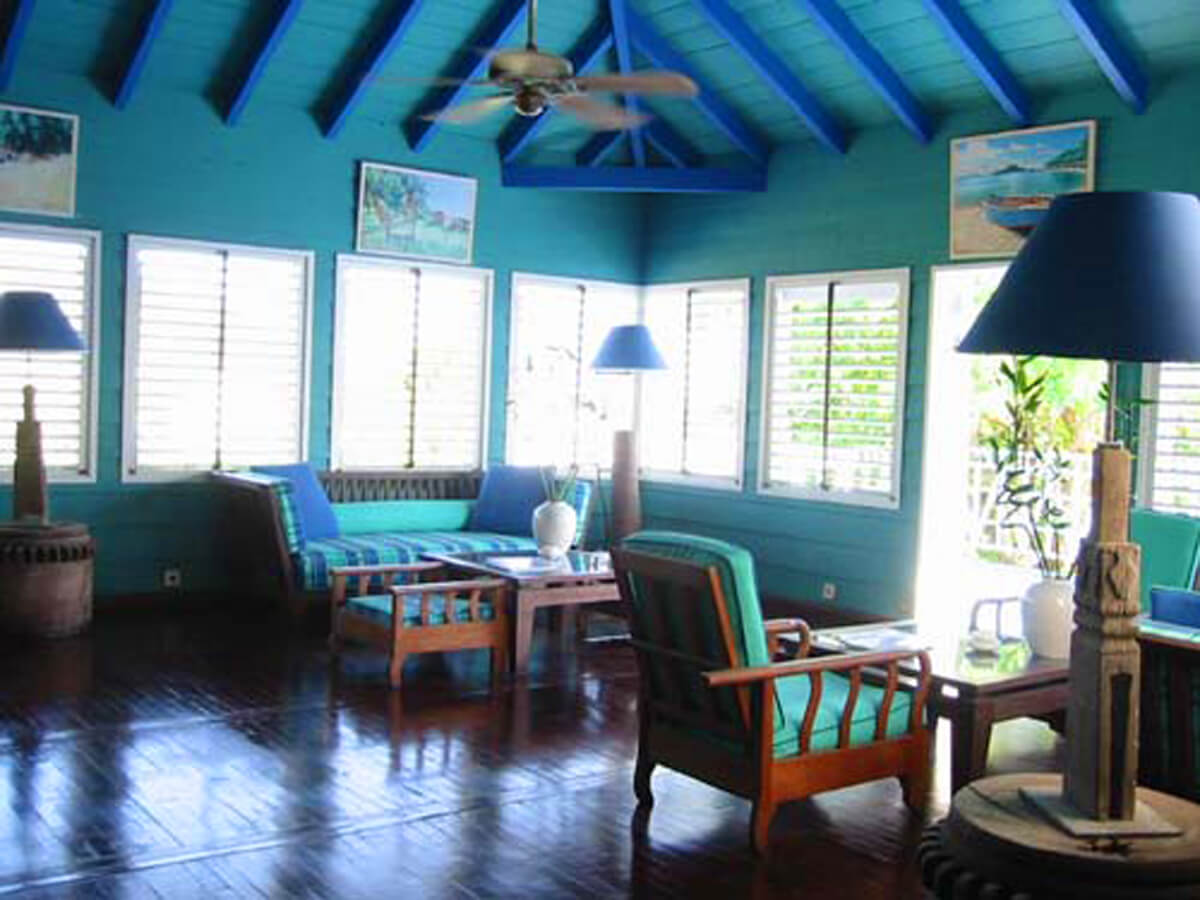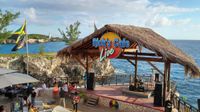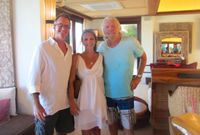“C’est magnifique!” I exclaimed to Thom and our son Wesley as we drove under the stone arch at the Hotel Guanahani. After all, we had not only entered one of the largest resorts on St. Barts-a 15-acre Provencal estate focused on the turquoise waters of Grand Cul de Sac Bay?but also one of the most Franco establishments on the island.

If it hadn’t been for several weeks of Michel Thomas language CDs (and a last-minute cram session on our American Airlines flight into nearby St. Maarten), I might just as appropriately announced, “Guanahani!” The name of the hotel, it turns out, means ‘welcome’ in Arawak, the long-dead language of the Amerindians who once inhabited the Caribbean.
The fishermen of Brittany and Normandy who settled St. Barts in the wake of the Arawak gave this corner of the French West Indies a unique Continental culture and hospitality. Though we have visited many times, the island still draws us back with its undeniable beauty, family-friendly atmosphere and European charm. St. Barts is an island where Parisians browse Cartier boutiques, and yachties and expats sip sunset cocktails while watching the passing regattas.
Nowhere is the soul of St. Barts more approachable than at the Hotel Guanahani. Seventy-five gingerbread cottages, individually painted a Creole palette of mango yellow, periwinkle blue and copper green are tucked among fragrant hedges of bougainvillea and hibiscus. The beachside cottages are only steps from the water, while the hillside units offer complete privacy. Some of the one- and two-bedroom suites even have plunge pools.
The cottage interiors, designed by Michel Jouannet’s, are a fusion of Antillean and French colonial decor. The dark hues of the polished teak floors and four-poster beds are nicely balanced by white-washed walls and vaulted ceilings, while the bathrooms have a Mediterranean flavor-terra cotta floor tiles, twin turquoise sinks and marble showers fully stocked with Hermes toiletries.
When it comes to cuisine, the hotel shines. Although it competes with more than 70 outstanding island restaurants, Bartolomeo-the hotel’s signature restaurant-is a favorite for guests and locals alike. While a pianist crooned Cole Porter tunes one evening, I enjoyed steamed snapper over eggplant and Thom dined on roasted lamb with goat-cheese ravioli. Wesley’s favorite was the grilled chicken breast. European portions made it easy for us to save room for raspberry soufflé, and the deliciously sinful melting chocolate cake.
Breakfasts can be taken either at your cottage or at L’Indigo, the pool-side day restaurant. Our lunch-menu favorites were the grilled sea scallops brochette and pink tuna on white cabbage salad. Wesley made short work of the coconut roasted pineapple cake.
Burning off post-cuisine lunch calories was easy at Hotel Guanahani. The hotel has a tennis court, two freshwater pools and a well-equipped gym. Only a five-minute walk from our hillside cottage (and just a few steps from the beachfront villas) are two private beaches perfect for all sorts of water sports from windsurfing to snorkeling. The bay is an excellent aquatic playground for kids since it rarely gets deeper than five feet, even a hundred yards offshore. Wesley and I delighted in taking out the plastic sit-upon kayaks, something we would have been reticent to do in less protected, deeper waters.
One of our favorite activities, however, was simply enjoying the culture and hospitality. Every interaction offered new opportunities for me to practice my nascent French. As I soon found out while stumbling through my arsenal of phrases, attempts at conversation are a source of great amusement and pleasure to the staff and fellow guests. Though most speak fluent English, everyone seems eager and flattered when Americans show an interest in the official language. Guy, the beach attendant, even tutored me on adjusting my formal French to the more casual vernacular.
By the end of our visit, French fever had caught the three of us. Thom was never short of a friendly “Bonjour monsieur, madame,” with fellow guests, and Wesley closed his days with a sleepy “Bonne nuit, mere; bonne nuit pere.”
On our last day we went down for a final swim and short kayak. Guy was there and asked how the French was coming along. We chatted for a bit and as we left, he gave a slight bow and a formal, “Au revoir.” For once it was my turn to correct him. Goodbye wasn’t the phrase that fit. We were already planning our next return, I explained. So I smiled and said, “A bientot.” He returned the grin and replied in English, “Yes, we will see you again soon.”

















